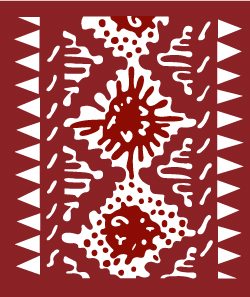January 2025 - The Covenant of Water

The Covenant of Water, Abraham Verghese’s new best-selling novel was our book choice for January. The 715-page epic spans three generations of a Saint Thomas Christian family in Kerala, India from 1900 to 1977, from births to weddings to deaths. The central character, throughout most of the book, is Mariamma, although we don’t learn of her name until three quarters of the way through. She is known by the terms her society uses from Molay, daughter, as a 12-year-old to Big Ammachi, big mother further on.
The book opens with her mother’s statement, “The saddest day of a girl’s life is the day of her wedding. After that, God willing, it gets better.” God was willing. She left her home, setting off for an arranged marriage with a 40-year-old widower in Parambil, a fictious village area closer to the “Spice Coast” (where Saint Thomas is said to have established Christianity in 52 AD). And so, the family grows and spreads its offspring and story through India. It becomes apparent that there is a dark cloud hanging over the her new family, referred to as “The Condition” in quiet tones. The narrator presciently tells us, “A good story goes beyond what a forgiving God cares to do: it reconciles families and unburdens them of secrets whose bond is stronger than blood. But in their revealing, as in their keeping, secrets can tear a family apart.”
Eventually other characters arise and take their roles in the narrative. There is Digby, a physician from Glasgow, who comes to practice in India because as a Catholic he cannot get ahead in Scotland. There is Rune, a Scandinavian doctor who comes to devote his life to the care and study of lepers, which plays a huge role in the story. There are journalists, artists, preachers, missionaries, members of the British ruling class and pulayars, the untouchables all competing for our attention. Many themes are touched on; the caste system, colonialism and oppression, arranged marriages, family structure, love and loss and the power of medicine are a few.
Verghese is first of all a doctor and the practice of medicine plays an integral part of the novel. One of his characters, a doctor, distinguishes between healing and curing, feeling that sometimes patients heal without being cured. The scenes involving doctors, nurses and researchers are all convincingly drawn, as are details relating to medical conditions and physical symptoms. His medical skills seem to be as accomplished as his writing talent.
Kerala itself forms a lovely backdrop, with its tropical landscapes, internal waterways and coastal vistas, as do many parts of India reflected in the unfolding plot lines. It was intriguing to find many words shared between Malay and Malayalam, the language of Kerala, such as kanji, halwa, rambutan and juba.
Aspects that we took issue with were the length and the lack of worthwhile maps. It was one big piece of literature in which interest levels rose and fell. Keeping track of all the characters was a Herculean effort. As the story moved around through various parts of India, it would have been helpful to have several maps to pinpoint the centres of action.
Our reading group had read one of Verghese’s earlier novels, “Cutting for Stone” in 2011 and enjoyed it greatly. However, those of us looking forward to his next offering won’t be holding our breaths as it took him 14 years to write this one. Oprah Winfrey has bought the rights to his book, intending to make it into a series. So, some of you who are interested in the story may not have to devote a portion of your life curling up with the book. Nevertheless, he must be working on another for he tells us that, “stories are equipment for living.”
Review with thanks to Leslie Muri.
